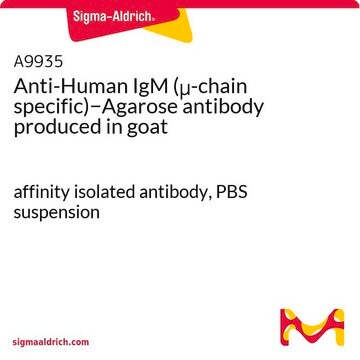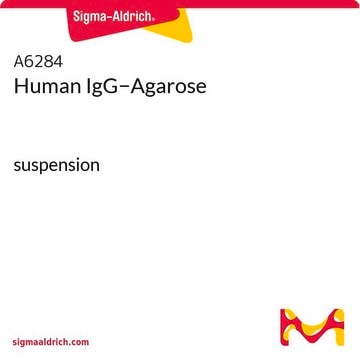A2691
Anti-Human IgA (α-chain specific)−Agarose antibody produced in goat
affinity isolated antibody, adsorbed with mouse and rat IgG
Synonym(s):
Goat Anti-Human IgA
About This Item
Recommended Products
biological source
goat
conjugate
agarose conjugate
antibody form
affinity isolated antibody
antibody product type
secondary antibodies
clone
polyclonal
form
PBS suspension
species reactivity
human
should not react with
rat, mouse
capacity
3-4 mg/mL binding capacity (human IgA)
storage temp.
2-8°C
target post-translational modification
unmodified
General description
Immunogen
Application
Physical form
Disclaimer
Not finding the right product?
Try our Product Selector Tool.
Storage Class Code
10 - Combustible liquids
WGK
WGK 3
Flash Point(F)
Not applicable
Flash Point(C)
Not applicable
Certificates of Analysis (COA)
Search for Certificates of Analysis (COA) by entering the products Lot/Batch Number. Lot and Batch Numbers can be found on a product’s label following the words ‘Lot’ or ‘Batch’.
Already Own This Product?
Find documentation for the products that you have recently purchased in the Document Library.
Our team of scientists has experience in all areas of research including Life Science, Material Science, Chemical Synthesis, Chromatography, Analytical and many others.
Contact Technical Service






